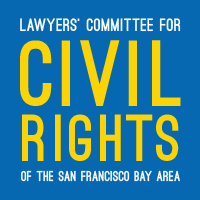California’s traffic fine system is cruel, insane
Original article appeared in The Bakersfield Californian.
By Milt Younger
Those of us who live in California would like to believe unfair traffic enforcement systems that prey on poor and minority communities are found only in places like Ferguson, Mo.
Guess again. California’s system for levying fines for often minor traffic violations is a cash cow intended to support government agencies, rather than encourage law-abiding behavior. And besides targeting people who can least afford to pay, the system is failing to provide the money it promised.
Gov. Jerry Brown is clamoring for reforms and financial relief. Legislators are finally getting a clue that they have created a mess. And most recently, California Chief Justice Tani Cantil-Sakauye has called for a rules change that will bring some small amount of fairness to the system.
But much more needs to be done. The fees attached to traffic fines must be rolled back. People should be given a chance to pay reduced fines. And funding for critical government services, such as the courts, must be stabilized through other means.
The cost of receiving a minor traffic ticket should not create a financial crisis that ruins a person’s life.
To understand the magnitude of the problem, consider the example prepared by the Lawyers’ Committee for Civil Rights of the San Francisco Bay Area and the Western Center on Law and Poverty. The example was included in the organizations’ recently released report that highlights the need to reform California’s traffic fine system.
Start with an “average” traffic ticket that has a base fine of $100. The following “assessments” and fees are placed on this one ticket:
• State penalty assessment — $10 for every $10 of base fine, add $100.
• County fund — $7 for every $10 of base fine, add $70.
• State criminal surcharge — 20 percent of base fine, add $20.
• Court operations assessment -— $40 per fine, add $40.
• Court construction — $5 for every $10 of base fine, add $50.
• DNA Fund — $5 for every $10 of base fine, add $50.
• Emergency Medical Air Transportation Fund — $4 per fine.
• EMS Fund — $2 for every $10 of base fine, add $20.
• Conviction assessment — $35 per fine, add $35.
• Night court assessment — $1 per fine, add $1.
So this $100 “average” ticket will actually cost a driver $490. Even tickets in the $25 range, for example for failing to notify the DMV within 10 days of moving, will swell to $196. Do the math on how much a $300, or $1,000 ticket will cost.
Now consider if you fail to pay your ticket by the deadline. You may have misplaced the ticket, or intentionally decided not to pay. Researchers cited the case of a man who was hospitalized for a blood clot and failed to make his deadline. Brace yourself for more fees: DMV warrant/hold assessment fee, add $10; fee for failing to appear, add $15; and civil assessment for failure to appear/pay, add $300.
Whether you just did not want to pay, or could not pay, you now owe $815 for that $100 ticket and in many counties, you can’t even see the judge and explain your situation unless you first pay the entire fine and all its assessments. Chief Justice Cantil-Sakauye now is calling for an emergency rule that would give people access to the courts without first paying their fines.
Researchers estimate more than 4 million Californians have had their licenses suspended because of their inability to pay these excessive fees. Forty-two percent of those who lost their licenses also lost their jobs, and 88 percent lost income. State officials estimate the uncollected bill in California for unpaid court-ordered fines amounts to $10 billion.
So when legislators over the years blithely attached fees to traffic fines, instead of providing adequate funding from reliable sources to support government services, they were doing no one any favor. They caused families to become destitute and government agencies to become cash-starved.
The system is cruel and insane. It must be fixed.
Milt Younger is a long-time Bakersfield attorney who specializes in personal injury cases.
